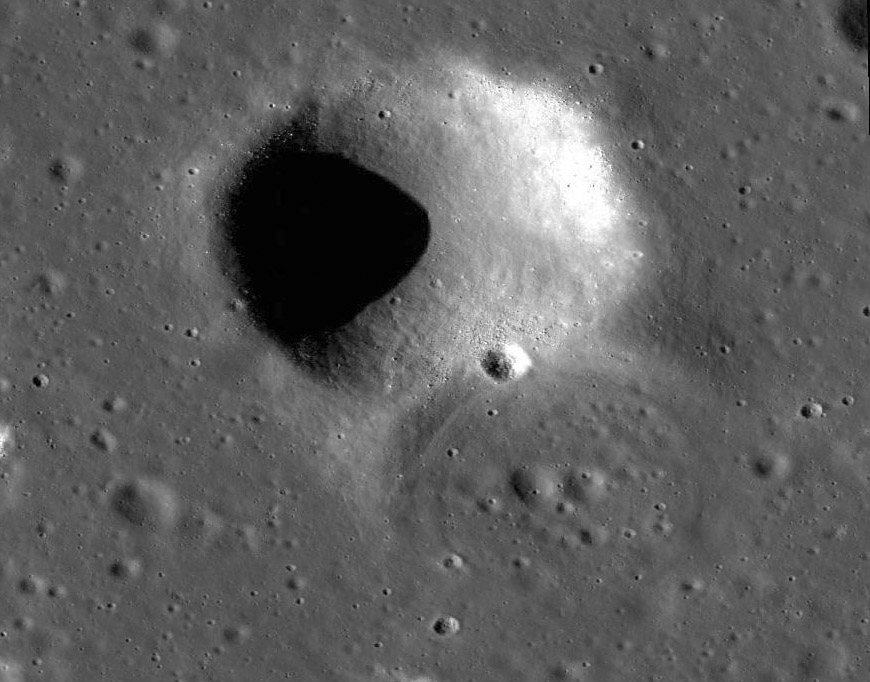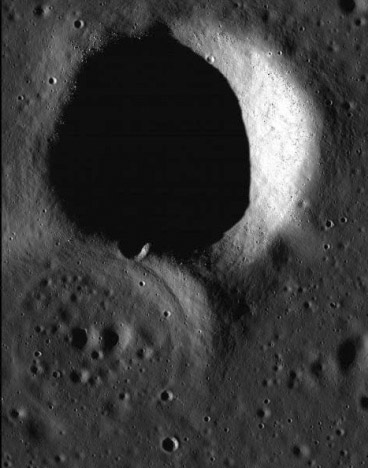July 11, 2022
Small Mystery
Originally published August 19, 2012

LRO WAC image from QuickMap, found by Maurice Collins, New Zealand
 |
See anything odd in this image? The large crater is a pretty standard small impact 1.3 km in diameter, about 25 km west of Helicon in northwestern Mare Imbrium. The semicircular arc to the south looks like a ghost crater - an impact crater that formed on an earlier lava flow that has been covered by a more recent one. But it is strange that the ghost feature cuts into the younger crater's rim. In the mid- 1960s the British scientist Gilbert Fielder, who believed that lunar craters were volcanic rings, proposed that ghost craters were volcanic features that had not completed their eruptions. They were craters that were stillborn. With such an interpretation this scene would be expected - an older crater (with the bright rim) is interrupted by a younger one only partially formed. But nobody believes lunar craters are volcanoes anymore so this relationship causes a quandry. What explanation do you offer?
Yesterday's LPOD: Data Tomorrow's LPOD: Wow! COMMENTS?Register, Log in, and join in the comments.
|



